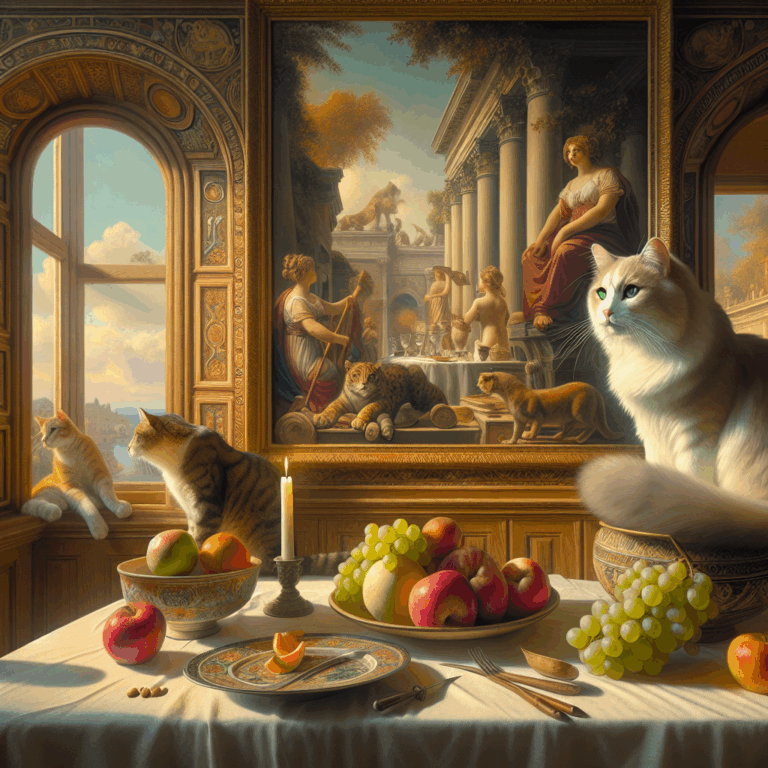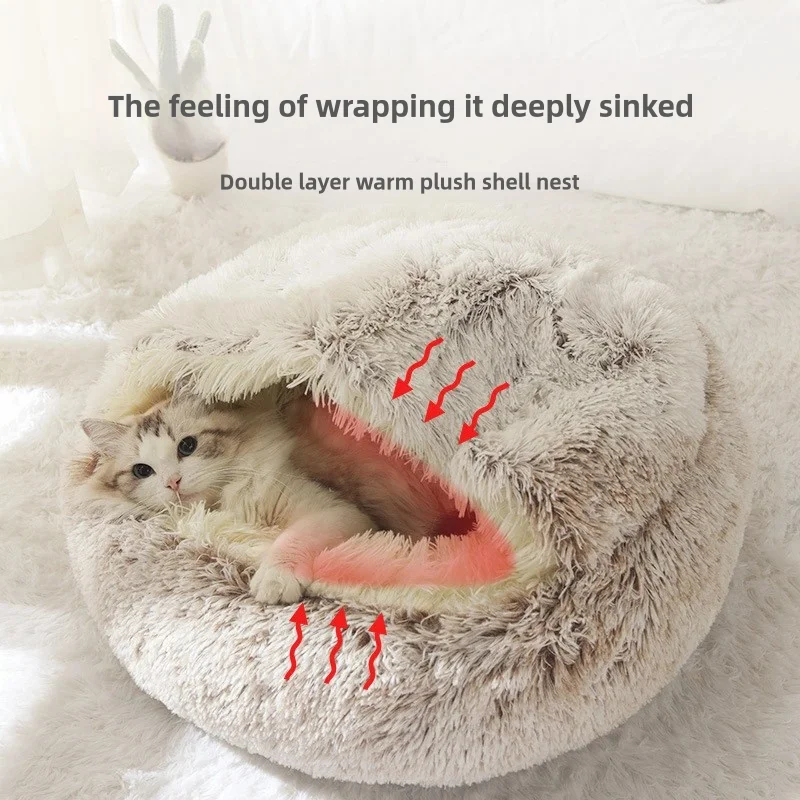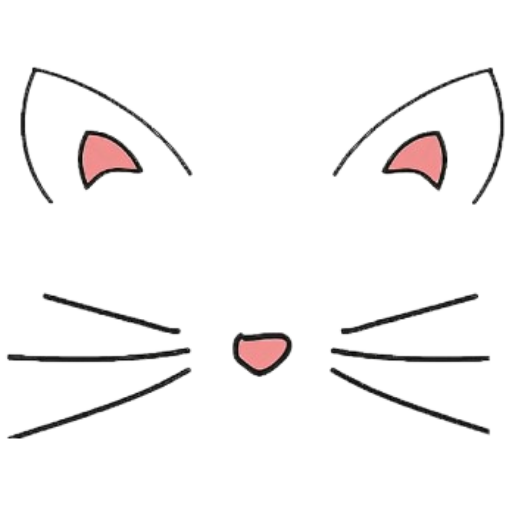The Feline Influence: Cats in Art and Culture Through the Ages
- No Comments
From the ancient temples of Egypt to the modern art studios of today, cats have left an indelible mark on art and culture throughout history. These enigmatic creatures have inspired artists, writers, and creators across the globe, and their influence continues to be felt in diverse aspects of human expression.
The reverence for cats can be traced back to Ancient Egypt, where they were regarded as sacred animals. The goddess Bastet, often depicted as a lioness or domestic cat, was revered as a deity of home, fertility, and protection. Cats were so highly valued that the penalty for killing one, even accidentally, was severe. This cultural significance is reflected in the abundant sculptures, paintings, and jewelry from the era that feature feline forms. Egyptian art was just the beginning of a long tradition of cat admiration.
Moving forward in history, cats continued to captivate the imagination of artists and writers. In the Middle Ages, despite a period of superstition linking them to witchcraft, cats appeared in illuminated manuscripts and religious iconography, sometimes symbolizing independence or mystery. The Renaissance period saw cats gaining prominence in the artworks of great masters like Leonardo da Vinci, who sketched these animals with his characteristic attention to anatomical detail. Cats often appeared in domestic scenes, highlighting their role as companions and protectors of the home.
The literary world has also been deeply influenced by cats. From T.S. Eliot’s whimsical “Old Possum’s Book of Practical Cats,” which inspired the enduringly popular musical “Cats,” to Edgar Allan Poe’s chilling tale “The Black Cat,” these creatures have inspired a wide range of stories and poems. In Japan, the Maneki-neko, or “beckoning cat,” has become a cultural icon, believed to bring good luck and fortune. This motif has transcended its origins, becoming a familiar sight in shops and homes worldwide.
In contemporary times, the internet has amplified the presence of cats in popular culture. With countless memes, videos, and social media accounts dedicated to feline antics, cats have become digital celebrities. Grumpy Cat, Lil Bub, and other viral sensations have turned their owners into entrepreneurs and drawn attention to issues such as pet adoption and animal welfare.
Artistic representations of cats have evolved with the times. Modern artists like Andy Warhol and Ai Weiwei have incorporated feline imagery into their work, using cats to comment on society, politics, and personal identity. Warhol, known for his fascination with celebrity culture, created a series of cat portraits that captured the creature’s mysterious allure. Meanwhile, Ai Weiwei’s installations often include cats as symbols of resistance and freedom.
As we look to the future, the bond between humans and cats shows no signs of waning. Their presence in art and culture reflects our enduring fascination with these complex creatures. From ancient deities to internet icons, cats have woven themselves into the fabric of human creativity, symbolizing everything from mystery and independence to companionship and comfort.
The story of cats in art and culture is one of timeless inspiration. As we continue to explore new forms of expression, it is certain that cats will remain a beloved muse, captivating hearts and minds with their grace, curiosity, and undeniable charm.

From the ancient temples of Egypt to the modern art studios of today, cats have left an indelible mark on art and culture throughout history. These enigmatic creatures have inspired artists, writers, and creators across the globe, and their influence continues to be felt in diverse aspects of human expression.
The reverence for cats can be traced back to Ancient Egypt, where they were regarded as sacred animals. The goddess Bastet, often depicted as a lioness or domestic cat, was revered as a deity of home, fertility, and protection. Cats were so highly valued that the penalty for killing one, even accidentally, was severe. This cultural significance is reflected in the abundant sculptures, paintings, and jewelry from the era that feature feline forms. Egyptian art was just the beginning of a long tradition of cat admiration.
Moving forward in history, cats continued to captivate the imagination of artists and writers. In the Middle Ages, despite a period of superstition linking them to witchcraft, cats appeared in illuminated manuscripts and religious iconography, sometimes symbolizing independence or mystery. The Renaissance period saw cats gaining prominence in the artworks of great masters like Leonardo da Vinci, who sketched these animals with his characteristic attention to anatomical detail. Cats often appeared in domestic scenes, highlighting their role as companions and protectors of the home.
The literary world has also been deeply influenced by cats. From T.S. Eliot’s whimsical “Old Possum’s Book of Practical Cats,” which inspired the enduringly popular musical “Cats,” to Edgar Allan Poe’s chilling tale “The Black Cat,” these creatures have inspired a wide range of stories and poems. In Japan, the Maneki-neko, or “beckoning cat,” has become a cultural icon, believed to bring good luck and fortune. This motif has transcended its origins, becoming a familiar sight in shops and homes worldwide.
In contemporary times, the internet has amplified the presence of cats in popular culture. With countless memes, videos, and social media accounts dedicated to feline antics, cats have become digital celebrities. Grumpy Cat, Lil Bub, and other viral sensations have turned their owners into entrepreneurs and drawn attention to issues such as pet adoption and animal welfare.
Artistic representations of cats have evolved with the times. Modern artists like Andy Warhol and Ai Weiwei have incorporated feline imagery into their work, using cats to comment on society, politics, and personal identity. Warhol, known for his fascination with celebrity culture, created a series of cat portraits that captured the creature’s mysterious allure. Meanwhile, Ai Weiwei’s installations often include cats as symbols of resistance and freedom.
As we look to the future, the bond between humans and cats shows no signs of waning. Their presence in art and culture reflects our enduring fascination with these complex creatures. From ancient deities to internet icons, cats have woven themselves into the fabric of human creativity, symbolizing everything from mystery and independence to companionship and comfort.
The story of cats in art and culture is one of timeless inspiration. As we continue to explore new forms of expression, it is certain that cats will remain a beloved muse, captivating hearts and minds with their grace, curiosity, and undeniable charm.


